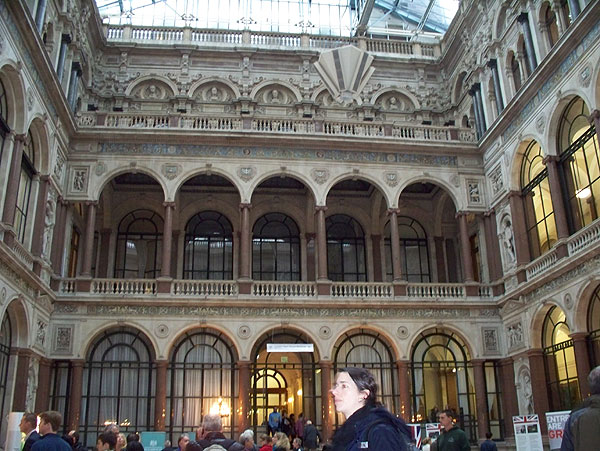
Grade I listed Victorian government office buildings. The former India Office includes the magnificently decorated Durbar Court. It was opened as part of the “Open House London” weekend.
The visitor route takes one past, or through, various items of interest. The most spectacular rooms are on the latter part of the tour, after the Durbar Court, and the finale is the Grand Staircase. The magnificent Victorian decor compares with some of the best that can be seen elsewhere.
It is also an opportunity to find out about the work of the Foreign Office.
Well worth a visit.
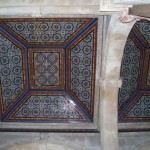
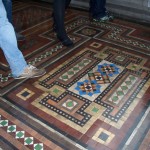
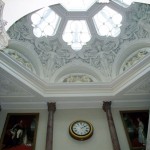
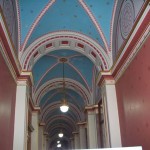
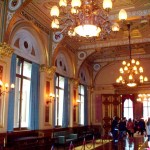
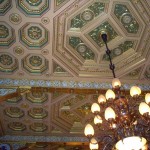
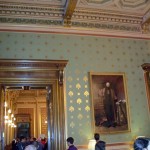
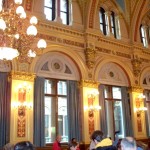
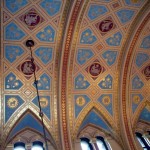
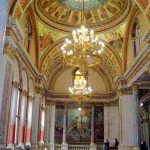
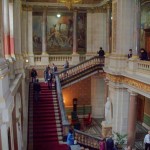
Category: London
Location
Westminster Hall, London
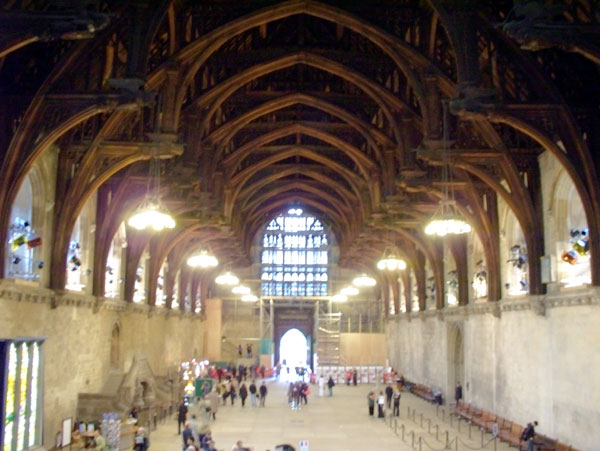 One of the finest and largest medieval halls in Europe, with a magnificent hammerbeam ceiling. Founded 1097, rebuilt with the present roof in the 14th century.
One of the finest and largest medieval halls in Europe, with a magnificent hammerbeam ceiling. Founded 1097, rebuilt with the present roof in the 14th century.
Once one has got through security and reached the entrance of the Hall, the first thing one notices is its sheer size. It looks much bigger than it seemed from the outside. It is also very high, and high up in the gloom of the ceiling are enormous hammer-beam timbers with richly carved ends. It still impresses today, and one can only speculate on how much it impressed its medieval visitors. The camera has enhanced the actual light level in the Hall.
Once inside, one can pass on through the richly decorated St Stephen’s Hall as far as the Central Lobby between the Commons and Lords, or turn right up a flight of stairs to visit the Grand Committee Chamber and Jubilee Room.
It’s worth going just to see the Westminster Hall interior. It is also an opportunity to find out about the workings of Parliament.
For information on visiting Parliament, check their website.
The visitors’ entrance is about halfway along the landward side of the Houses of Parliament. Be prepared for a lengthy wait outside before passing through airport-style security.
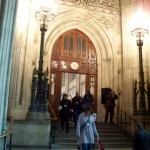
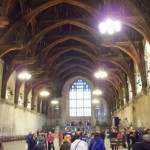
Horse Guards, Whitehall, London
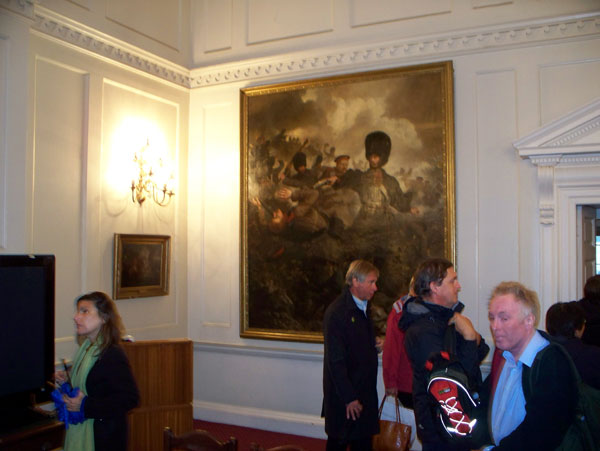
A Grade I listed Palladian composition at the heart of Whitehall, for a hundred years the HQ of the British Army.
The symmetrical building sits over and around an archway leading from Whitehall through to Horse Guards Parade.
On the visitor tour one gets to see the stairwell, the central lobby, Wellington’s room with his partner desk (now used as a major-general’s office), the front room with various paintings, and the descending stairwell.
It was opened as part of “Open House London 2012”
If you go, expect a wait of 1 to 1.5 hours before you can get in, in a group of about 30. Bring sharp elbows to deter queue-jumpers. 🙂 A tour, conducted by a serving soldier, lasts about 45 mins.
I did not take external photos because of the rain.
Worth a visit? That depends on how interested you are in military history.
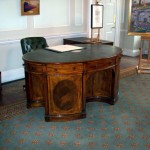
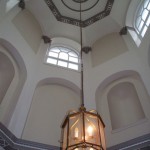
Markfield Beam Engine and House, Haringey, London
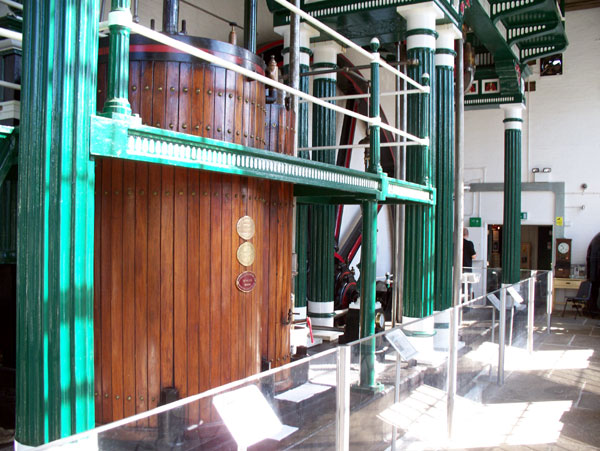
Victorian industrial building (1886) next to the River Lee, with the original Wood Bros beam pumping engine in situ and in working order.
The site was a sewage pumping and treatment station, but no longer has this function. Asides from the museum there are a cafe and other civic amenities. The buildings for the engine house, boiler house and other pumps (scrapped) still remain. The original boiler house and 2nd engine house have been converted to other uses.
The 100hp beam engine still stands in its original engine house, and was restored to working order in 2009. Steam is provided by two oil-burning boilers in a new single storey boiler room.
The ornamented design is typical of its period.
There are also some display panels about the history of the site.
Because of the cost of fuel, the engine is in steam only about once a month.
I was fortunate enough to see the engine running. It seems to be awkward to start up. 🙂 I purchased the operating instructions compiled by one of the volunteers – they run to 38 pages.
The site is worth a visit if you are interested in industrial heritage. It is at the end of Markfield Road: pass under the two railway arches and along the cobbled roadway to the left. Apparently it is OK to drive all the way down and park in the marked area next to the engine house.
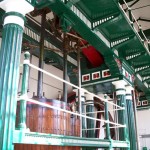
King George V Pumping Station, Enfield, London
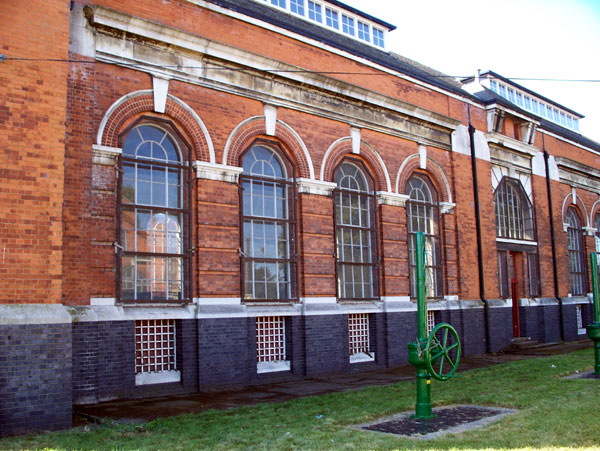 Open House London
Open House London
Designed to pump water from the River Lee into the George V reservoir, the building houses three old disused gas Humphrey pumps, and two electric pumps. It was built in 1913.
The pump hall is of brick with arched windows, and inside is lined with white glazed bricks. A travelling crane runs along the top of the walls below the metal framed roof. The Humphrey pumps are almost unique, as they worked by using gas explosions to oscillate water in a huge U-tube, part of which (the black funnels) can be seen in the adjoining building, which is decorated with classical pillars. The third building was formerly used for gas generation.
If you pass a gate and climb the bank behind the buildings, you will be confronted by the vast expanse of the George V reservoir.
The site is worth a visit if you are interested in industrial heritage. The pump hall is an attractive building, built at a time when civic pride rather than accountancy ruled design.
The pumping station was opened for viewing on 22 Sept 1012 as part of the annual “Open House London”.
(If you are interested in Open House London and have a few pounds to spare, I suggest obtaining the annual catalogue booklet, as thumbing through this to see what’s available where is much easier than trawling the database-driven website, and you can carry it around with you. Many buildings require pre-booking.)
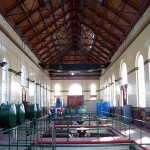
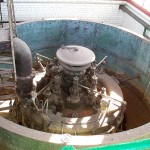
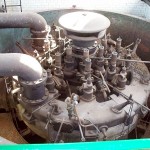
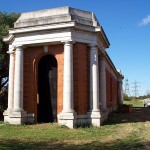
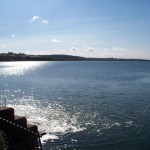
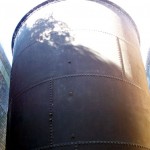
Kew Gardens
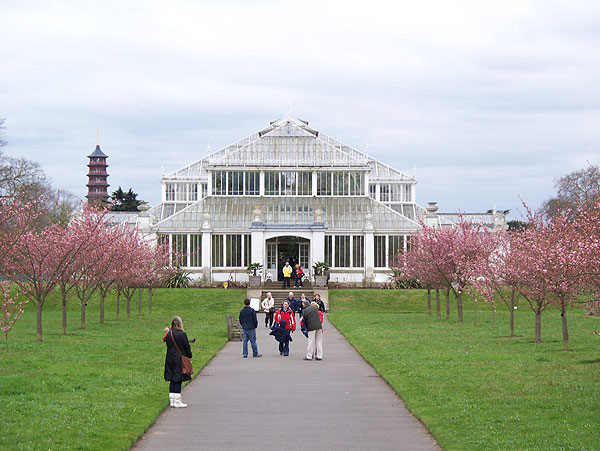
The famous Royal Botanical Gardens have lots of things for visitors to look at, and are also a centre for botanical research and plant conservation. They are also of historical interest. Major attractions include the two huge Victorian glass-houses and their contents, several other conservatories, a number of buildings and follies including the famous Pagoda, two or three art galleries, a treetop walkway, a lake, plus the inevitable cafes and shop, set in 326 acres (132ha) of gardens. Kew Palace and Queen Charlotte’s Cottage (curated by Historic Royal Palaces) are also within the gardens.
On the whole, the exotic indoor plants (in the conservatories) are more interesting than the outdoor, and the more notable types are highlighted by display panels. Both the Palm House and the Temperate House have an internal gallery which the energetic can climb to walk around the palm-tree-tops, and enjoy views over the Gardens.
Update from Dec. 2021 visit: The visiting hours are now rather restricted, but I got in straight away without having to book or queue. Various installations were in place for “Kew at Christmas” opening a few days later, with some illuminations and installations already lit up during the day as a preview of what one would see on paying the stiff fee for the evening show. Not really my cup of tea except for some very pretty “birds”.
Some buildings were closed, but I visited some features not seen before – the treetop walkway (a stiff climb with the lift not in service), the Minka House, and some giant redwoods. By the lake, I was accosted by a pair of exotic ducks.
Practical details: The Gardens are within walking distance of two railway stations. There is limited parking in Ferry Lane (chargeable). An all-day stay in the Ferry Lane car park will cost several pounds. The gardens are over a mile long, so a visit to diverse parts of the gardens will involve a walk of several miles. For the less fit, there is a ‘Land Train’ which stops at seven points around the gardens. The big glass-houses however are within 500 metres of the Victoria Gate. You are advised to make an all-day visit, as the admission charges are quite steep, and even if you are there all day you are unlikely to be able to see everything. There is a small discount for repeat visits. In summer, the gardens close at 6.30pm or later.
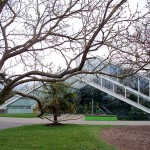
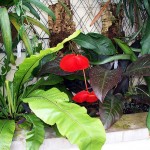

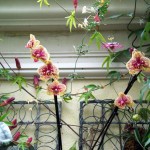

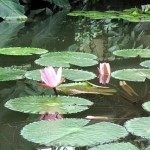
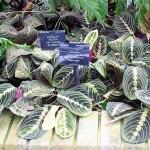
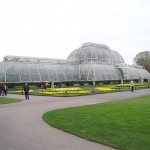
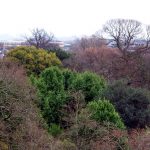

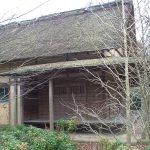
Kew Palace
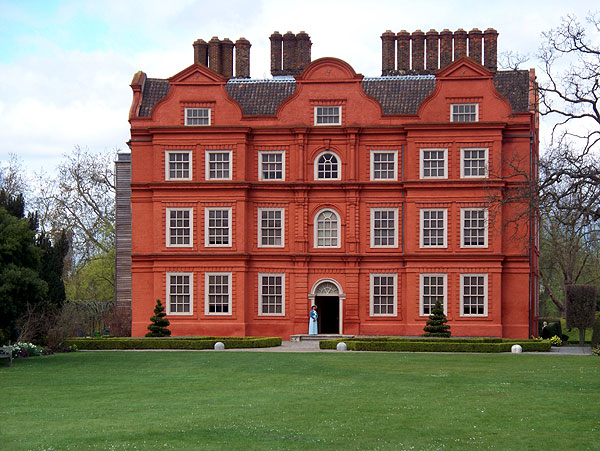
The ground and first floors have been restored and furnished to recreate their appearance when occupied by George III. The third floor can be seen just as it was when abandoned in the 19th century. The Palace makes an interesting visit. It and the Cottage were curated by young ladies in period costume on the day of my visit.
At the other end of the park is Queen Charlotte’s Cottage. This rustic building, once used for Royal picnics, is notable for its size ( similar to a 4-bedroom detatched villa), and its inefficient use of interior space (two large stairwells and only two rooms of any size.)
Practical Details: Kew Palace is situated in the north-east part of Kew Gardens. To visit it you need to purchase an admission for the Gardens (not cheap!), then a Palace admission ticket at the welcome suite about 100 metres from the Palace. It is therefore suggested that, unless you like throwing your money about, you allot a whole day to visit both. Queen Charlotte’s Cottage (within the West end of the Gardens)is open weekends during the warmer months. There is no entrance charge for the cottage.
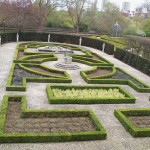
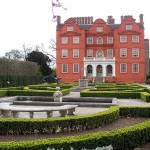
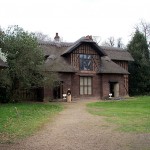
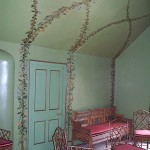
Hampton Court Palace
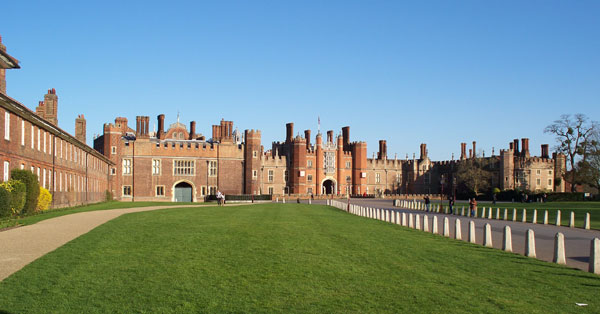 This is one of the Royal Palaces, with the present buildings started by Cardinal Wolsey, extended for Henry VIII, and with a baroque Palace added on for William and Mary, and some further development for the Hanoverians. George II was the last monarch to occupy the Palace, which thereafter was used to provide grace-and favour residences for deserving persons. The residents were typically gentlewomen or widows of men who had provided some distinguished service to the State. The 1000+ rooms available were partitioned up to provide over 50 multi-room apartments.
This is one of the Royal Palaces, with the present buildings started by Cardinal Wolsey, extended for Henry VIII, and with a baroque Palace added on for William and Mary, and some further development for the Hanoverians. George II was the last monarch to occupy the Palace, which thereafter was used to provide grace-and favour residences for deserving persons. The residents were typically gentlewomen or widows of men who had provided some distinguished service to the State. The 1000+ rooms available were partitioned up to provide over 50 multi-room apartments.
In the 20th century the phasing out of the grace-and-favour apartments took place for a number of reasons, the foremost being the impracticality of bringing the often crudely adapted apartments up to 20th century standards of heating, plumbing and convenience. Today, large areas have been reclaimed for public access, and the unseen rooms are used for storage, offices and staff accommodation.
The Palace is big; more of a brick village than a building. The two principal phases of development can be best seen if one stands in the Privy Gardens near the river, where the squarish Baroque block is in front of you and a forest of Tudor chimneys is to your left. The gardens are big too; the best views of the formal gardens can be had by peeking out of windows as you tour the Palace. A canal separates the gardens from the Home Park, but it’s possible to access the Park, where the Long Water stretches off into the far distance, if you have time to tramp around with a map.
Inside, there is a lot to see, and nearly all of it is worth a look. The highlights are Henry VIII’s Great Hall, with its highly carved hammer-beam roof, and the Chapel Royal with its intricate blue and gold ceiling. After that there are the Tudor Kitchens, which have been restored and kitted out to show visitors their original functioning, and the Young Henry VIII exhibition. Then there’s the William III apartments, the Georgian Apartments and other attractions.
Outside, the Privy Garden and Great Fountain Garden should be seen. Then there are the Pond Gardens, Banqueting House and the Great Vine on the river side. On the other side is a large area with the 20th Century Garden, Wilderness, Maze, etc. This latter area is perhaps best taken in as you make your way back to the exit, car park etc at the end of your visit.
Practical Details: There is some car parking (chargeable); an all-day stay will cost several pounds. The Palace is well served by public transport, and if you arrive by rail at Hampton Court station (terminus), finding the nearby Palace is a no-brainer. The HRP website suggests a minimum three-hour visit, but I stayed for about six hours and still did not manage to see everything inside and out.
The only eatery is the Tiltyard Cafe in the grounds. Photography seems to be generally permitted except where they say you can’t, i.e. in the Chapel Royal and the entrances to the few remaining grace-and-favour apartments. Tickets can be pre-booked online, which could save you money and avoid wasting scarce visit time stuck in a lengthy queue in the ticket office.
There is a no-extra-cost tour of the Grace-and-Favour apartments, which is worth catching if you have an hour, as it gets you into one or two spaces not normally open to visitors.
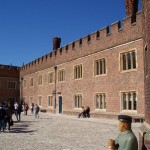
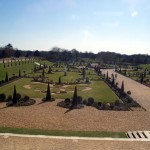
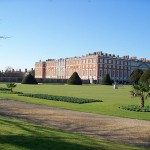
Wellcombe Collection, London
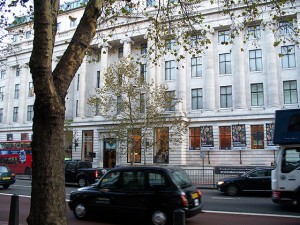 The Collection was founded by wealthy pharmaceutical magnate Sir Henry Wellcombe.
The Collection was founded by wealthy pharmaceutical magnate Sir Henry Wellcombe.
The Collection “explores the connections between medicine, life and art in the past, present and future. The venue offers visitors contemporary and historic exhibitions and collections, lively public events, the world-renowned Wellcome Library, a café, a bookshop and conference facilities.” The permanent collections on the first floor are “Medicine Man” Sir Henry’s historic collection of objects, and “Medicine Now” an exhibition of modern medicine, and also modern art inspired by medicine. On the ground floor are the temporary exhibitions, which typically are of modern art.
On my visit I looked first at “Medicine Now” which was quite interesting. Note the stacked volumes of books containing the printed human genome, the artwork of medicine pills carved by the artist to represent their function, the section of a plastinated human body, and the video of the prehistoric fish that seamlessly and slowly evolves into a man. Some people might find the historic “Medicine Man” collection more interesting, and the more gruesome items, such as the Chinese torture chair, the mummified Peruvian corpse, or the large collection of bone saws, may particularly appeal to boys. There are also paintings, masks, glassware, artificial limbs and curios. And let’s not mention the Japanese sex aids… 🙂
At the time of my visit, the temporary exhibitions included Charlie Murphy’s The Anatomy of Desire and Other Objects (glass castings of intimate body parts), Infinitas Gracias: Mexican miracle paintings (naïve paintings commissioned to give thanks), and Felicity Powell: Charmed Life – the Solace of Objects (an exhibition of objects from the historic Lovett collection of charms, plus modern art by Felicity Powel.) The Powell wax bas-reliefs were beautiful and well worth seeing.
Just as it says on the website, the Wellcombe Collection is “a free destination for the incurably curious”. I spent over 3 hours here.
To say that the Wellcombe building is well-served by public transport would be an understatement, as it’s on the south side of Euston Road, and almost opposite Euston Station. It’s also close to Euston Square underground and Euston bus station.
Sir John Soane’s Museum, London
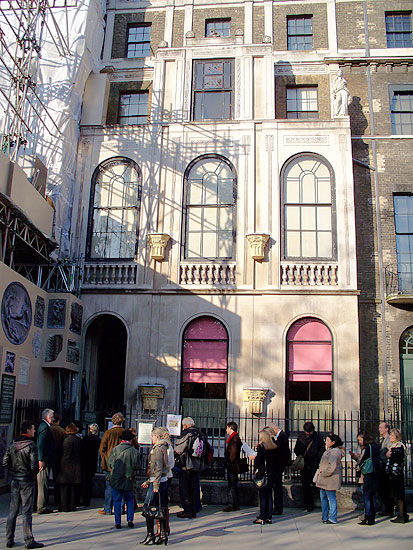 Wealthy architect and self-made man Sir John Soane bequeathed his London home and collections to a trust in 1837, stipulating that the house and collections be preserved just as they were. The collections are contained in three linked houses, nos 12, 13 and 14 on the north side of Lincoln’s Inn Fields. No.13 is the principal museum building.
Wealthy architect and self-made man Sir John Soane bequeathed his London home and collections to a trust in 1837, stipulating that the house and collections be preserved just as they were. The collections are contained in three linked houses, nos 12, 13 and 14 on the north side of Lincoln’s Inn Fields. No.13 is the principal museum building.
Today the trust is still operating and the collection is still in place. Most of the collection is housed in the rear of the three houses. No. 12 is being renovated to open eight more Soane rooms, and the front of no. 14 was bought back in 1997 for institutional use.
The ground floor library and dining room of no.13 is an opulent room with an elaborate ceiling. The many mirrors make solid walls appear to be openings leading through to another space. This is a theme too in various other parts of the house. In the rooms at the back is a huge collection of sculptured and architectural items, mostly plaster casts, but including some genuine ancient classical items. In the basement is a large stone sarcophagus, and if you get close enough to it, you can see that it is completely covered with Egyptian carvings inside and out. It is about 3000 years old. Most of the art is in the Picture Room, and two-thirds of it is hidden from view, so wait about till the attendant swings out the outer panels to reveal what is behind. On the north side the hidden art includes Hogarth’s “Rake’s Progress”, and on the south side the hidden art is architecural drawings. On the south side a second set of panels swing back to reveal, disconcertingly, a very large and deep space, with a stained glass window and sundry pictures, drawings, models and carved items now exposed.
The Breakfast Room in no. 13 is another ornate construction, with a domed ceiling and many pictures, some of them on concealed swing-out panels. Upstairs is the elegant South Drawing Room, which has openings where one would expect the windows to be, leading onto the glazed front loggia.
Currently, spotting the Museum as one approaches is a no-brainer – just head for the boxed-in scaffolding concealing no.12. The entrance is at no 13; be prepared to queue for the security check. Admission is free, but you might see more if you take the useful optional, and limited-numbers, guided tour for £5. I spent nearly 3 hours at the Soane Museum.
Nearest tube station is Holburn. There is some very expensive short-term metered parking near the Museum.
